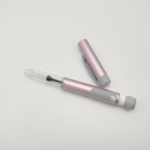Do you still have a sense of boundaries?
I’m talking about semaglutide. On October 10, Novo Nordisk announced that the Phase III clinical trial of semaglutide in the treatment of kidney damage patients with type 2 diabetes and chronic kidney disease was terminated early due to excellent efficacy.
GLP-1 drugs are becoming a panacea, from reducing blood sugar and weight to chronic kidney disease, NASH, Alzheimer’s disease, Parkinson’s disease, obstructive sleep apnea, intermittent claudication, dyslipidemia, and even improving psoriasis disease symptoms. In May this year, “Frontiers in Pharmacology” also discussed the treatment of GLP-1 for inflammatory bowel disease (IBD), mucositis, short bowel syndrome, acute lung injury, pulmonary fibrosis, and pulmonary hypertension.
Who can withstand this? The GLP-1 industry chain has finally become fragrant and long, from downstream drugs (Innovent Biologics, Hengrui Pharmaceuticals, Huadong Medicine, Changshan Pharmaceuticals, Borui Pharmaceuticals) to midstream CDMO/API (WuXi AppTec, Gloria Pharma Ying, Hanyu Pharmaceutical, Puluo Pharmaceutical, Jiuzhou Pharmaceutical, Nuotai Biotech, Sirna Biotech, Puli Pharmaceutical), to upstream suppliers (Haofan Biotech, Lanxiao Technology), more and more pharmaceuticals Enterprises are involved in the craze.
Is there nothing missing? Another window in the GLP-1 industry chain has quietly opened, and the supporting equipment will also have a name:
The annual demand for injection pens is nearly 10 billion;
Each patient consumes an average of 54 needles per year;
The high-end field of rubber stoppers is monopolized by imported manufacturers;
Cartridge bottle import manufacturers account for nearly 80% of the market.
As if a stone is thrown into the middle of the pool, the GLP-1 ripples may eventually be transmitted to the equipment, and the explosive power will be mediocre. However, benefiting from the double increase in penetration rate and domestic substitution rate, performance will have a long-term climbing process, and will not be affected by the middle and lower reaches. Any impact of the inevitable involution situation.
01
injection pen launch
Prefilled insulin pens are currently commonly used for insulin and GLP-1 injections and cannot be reused. According to calculations by Deppon Securities’ medical model, the global demand for insulin + GLP-1 injection pens in 2030 is 9.542 billion, of which the market size of GLP-1 injection pens is 26.38 billion yuan.
A small injection pen has a complex structure and has more than 40,000 patents. The drug delivery device needs to include dose setting, capture and release mechanisms. Novo Nordisk’s complex patented design also provides audio prompts after the injection, dose memory, and App monitoring functions.
Novo Nordisk, Eli Lilly, and Sanofi account for 80% of the world’s injection pen share, but there is no ice that cannot be broken by domestic products. Suzhou Hanerxi Medical spent 8 years breaking down patent barriers. The cartridge injection pen was approved in China in July 2020. It is the only domestically produced injection pen.
equipment
As a precision injection device, insulin injection pens need to complete precise assembly and functional testing processes to ensure the stability and uniformity of product quality. At present, injection pen automated assembly equipment is mainly monopolized by German Teamtechnik, the core supplier of drug delivery devices.

